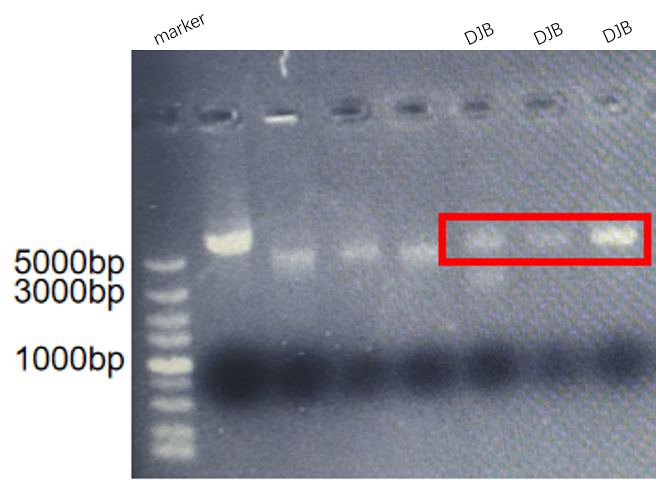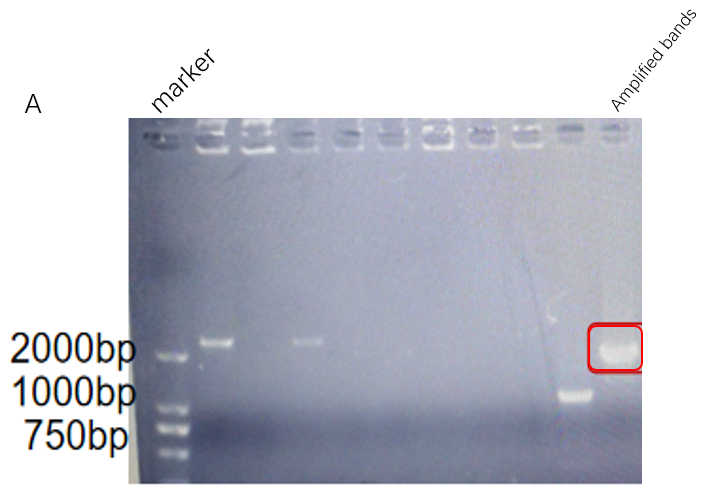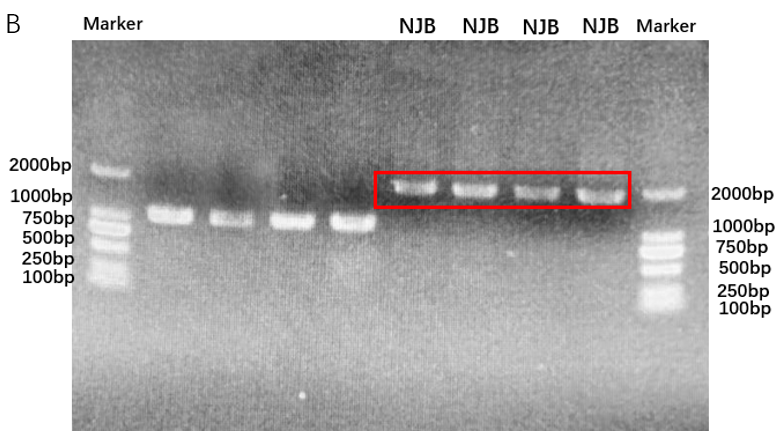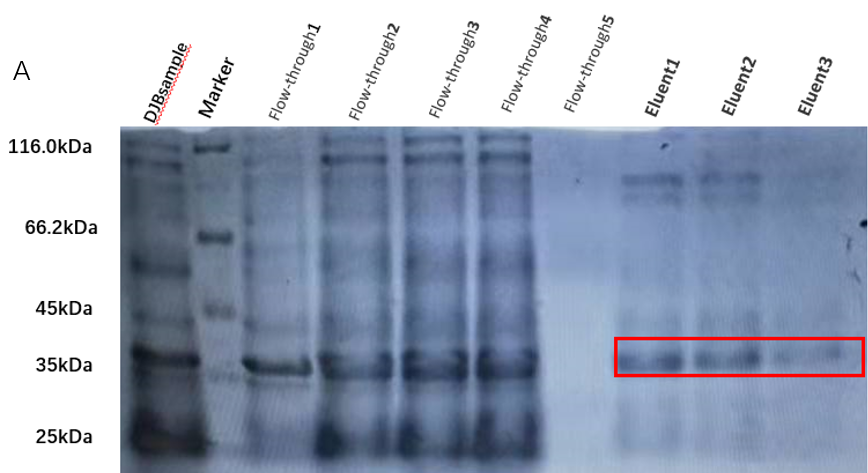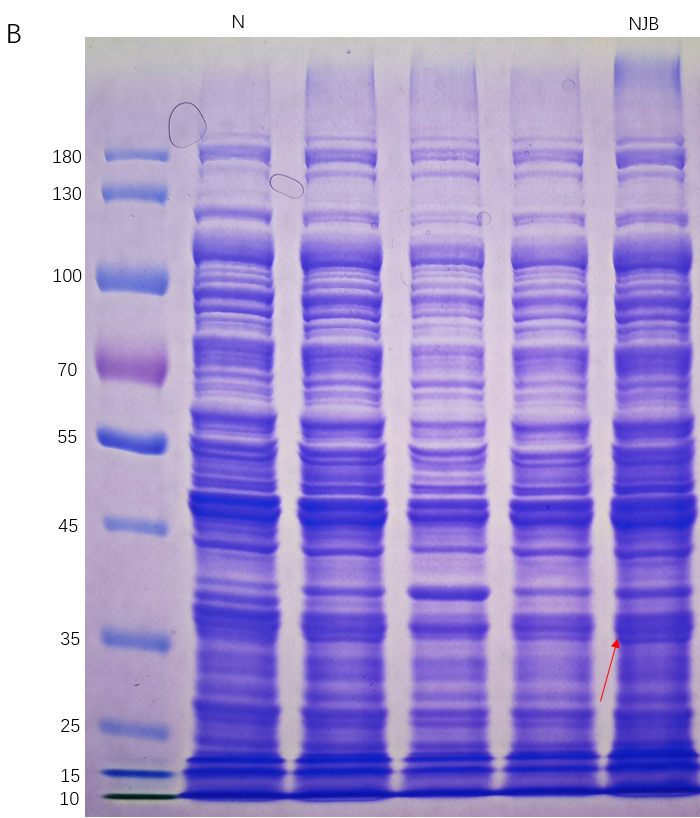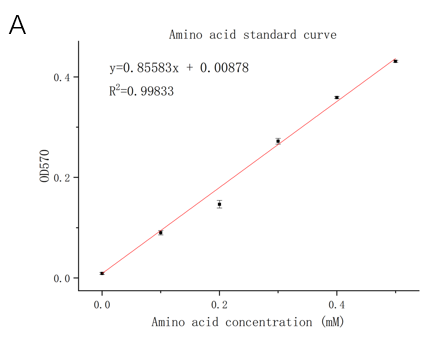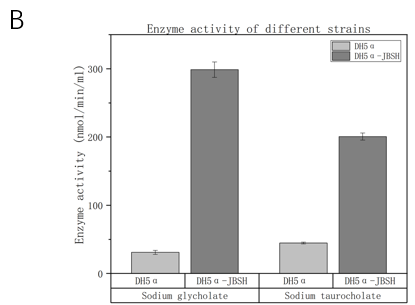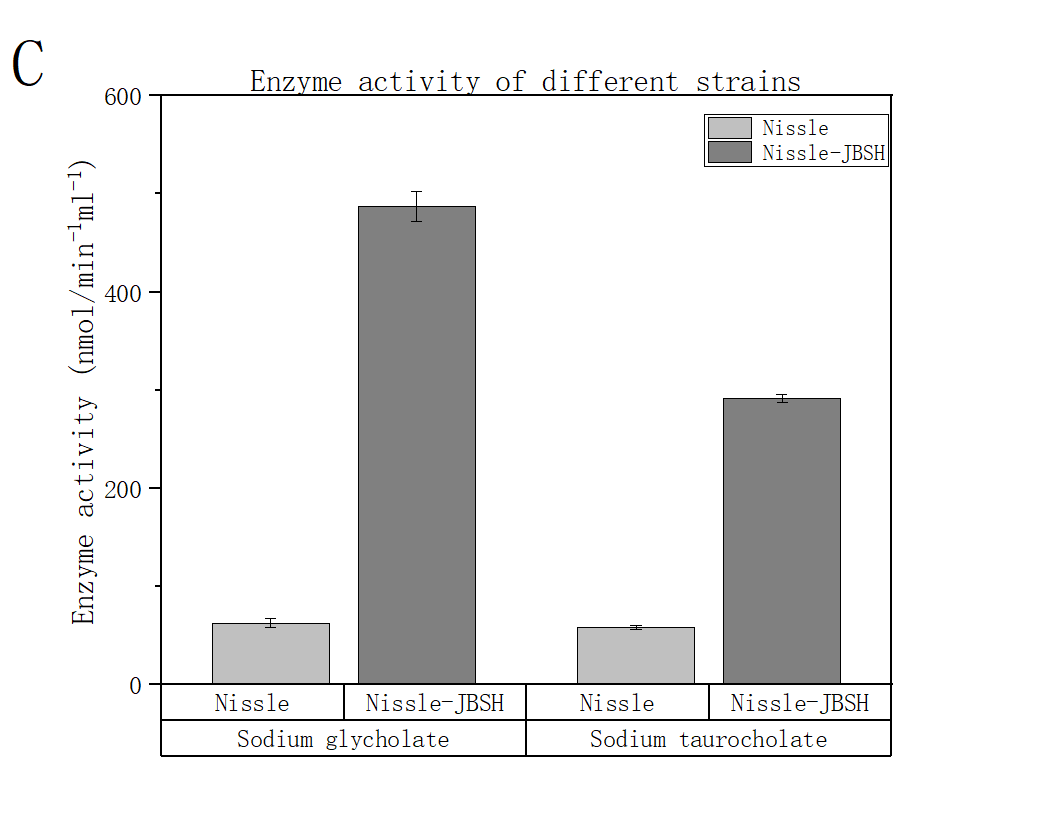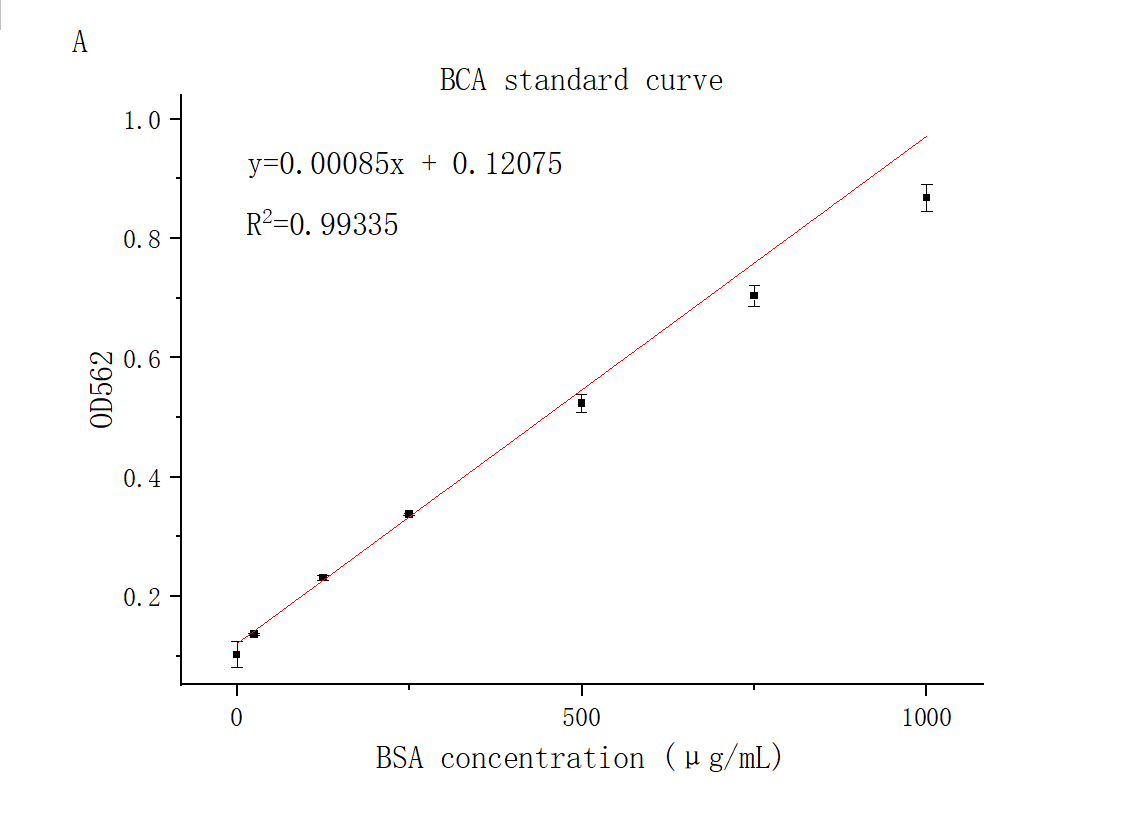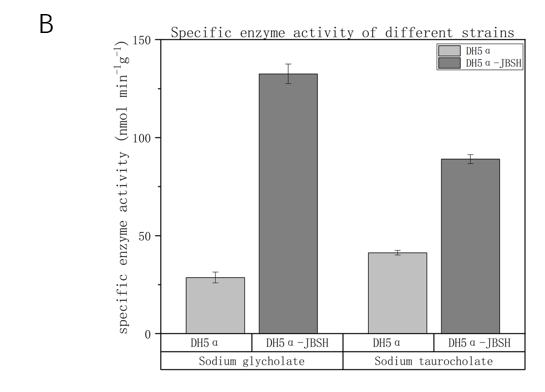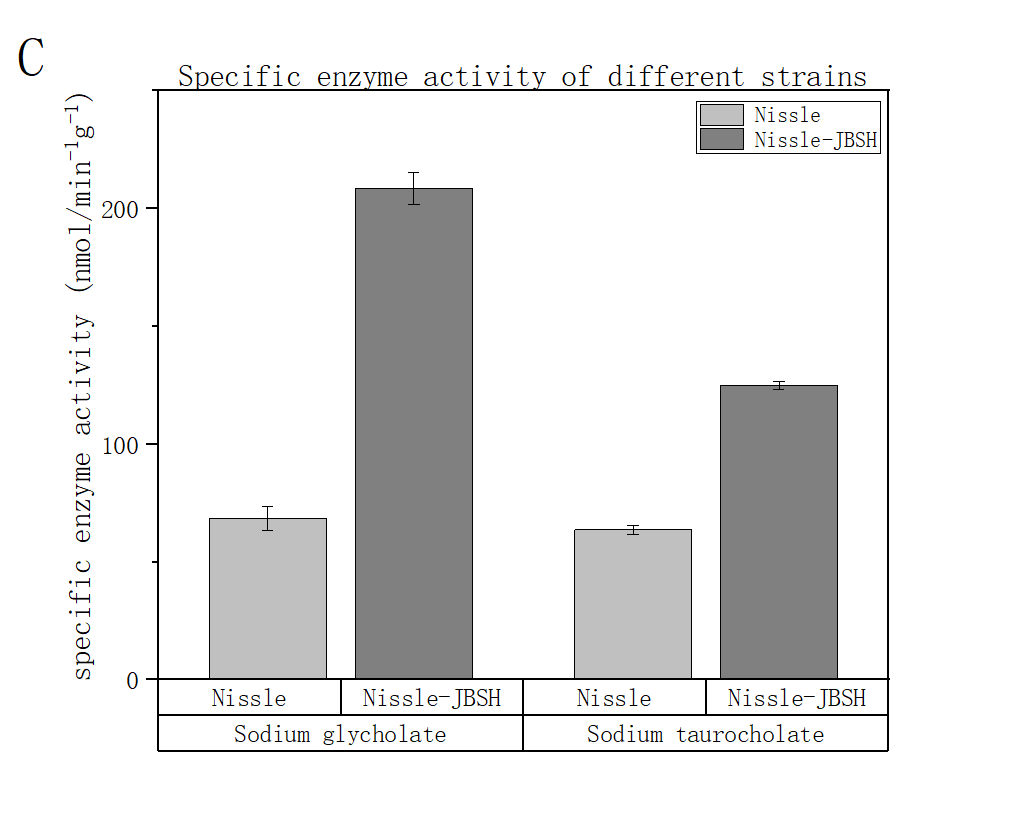Part:BBa_K3838222
J-BSH
Bilesalthydrolase (BSH), responsible for hydrolysis in combination with bile salts to produce free bile acids and amino acids. BSH activity in gastrointestinal tract was mainly from Firmicutes (30%), Bacteroidetes (14.4%) and actinobacteria (8.9%). Impaired microbial enzyme activity in IBD patients leads to impaired bile acid metabolism, characterized by the inability to hydrolyze, transform, and desulphurize bile salts. Microbial BSH activity removes glycine or taurine molecular coupling to produce unbound bile acids. Abnormal intestinal bile salt metabolism enhances the inflammatory response of the intestinal epithelium, which worsens IBD. It has been documented that the ingestion of probiotics with BSH activity can promote the bioconversion of intestinal bile salts, thereby alleviating the inflammatory response induced by high doses of intestinal bile salts. Therefore, we selected heterologous expression of BSH gene from Lactobacillus acidophilus. In a team project, the BSH-related parts are structured as follows: J23100 promoter +RBS+BSH+6xHis Tag+ terminator
Sequence and Features
- 10COMPATIBLE WITH RFC[10]
- 12INCOMPATIBLE WITH RFC[12]Illegal NheI site found at 7
Illegal NheI site found at 30 - 21INCOMPATIBLE WITH RFC[21]Illegal BglII site found at 969
- 23COMPATIBLE WITH RFC[23]
- 25COMPATIBLE WITH RFC[25]
- 1000COMPATIBLE WITH RFC[1000]
Data:SZU-China 2021 TEAM
1. The DNA level
The plasmid PJB was selected for validation, and the transformed plasmid DH5a (DJB) was verified by plasmid running gel and PCR. As can be seen from figure 1, the sample band was over 5000 bp, basically matching the target band 5477 bp, which proved that our plasmid transformation was successful.
In addition to DH5α, PJB was also transferred into Nissle 1917, but the plasmid concentration extracted by Nissle 1917 was too low, and no bands were found in the plasmid by gel electrophoresis. We also conducted PCR verification on plasmids of DH5a and Nissle 1917, and DJB was the target fragment. As can be seen from figure 2, after PCR, the sample ran out a band near 2000 bp, and the target fragment was 1876 bp, which was consistent with the target band. This further indicates that our plasmid transformation is successful.
2. Protein level
We then validated the engineered bacteria at the protein level. We first tried to purify the protein using the 6x His tag attached to BSH protein. We successfully purified the transformed DH5α expressed BSH, but there was no valid data of Nissle 1917, so we could only verify the successful expression by SDS-PAGE, and the results were shown in figure 3. In the purification, BSH was not fully combined, and the presence of hybrid proteins with the same size of BSH resulted in the presence of bands with the same size in the eluent, which was expected. However, due to time constraints, we did not have time to explore the details of elution conditions. Therefore, due to problems in elution gradient, concentration control and sample grafting in the experimental process, there were other miscellaneous proteins in the eluent, but the BSH purified bands were clearly visible, which effectively indicated that the engineered bacteria successfully expressed BSH protein. For Nissle 1917, SDS-PAGE also shows clearly visible bands of expression, as indicated by red arrows.
3. Functional representation
We first for JBSH enzyme activity in the DH5a validation, but we found that in the process of experiment under the condition of 37℃ for the night after the training, engineering bacteria enzyme activity was 0, while the control group had background expression of enzyme activity. When spend the night in 20℃ cooling cultivation, and 37℃ for short periods of time can be measured engineering strains of bile saltwater enzyme activity of enzymes, having obvious difference with the control. We hypothesized that the protein formed inclusion body and lost its activity after being cultured at 37℃ for too long. Therefore, crude enzymes were extracted under the condition of overnight culture at 20℃ for enzyme activity measurement.
Bile saline hydrolysate is a combination of bile acid decomposition to produce bile acid and glycine/taurine. We mixed the crude enzyme solution with 0.5 mM sodium glycholate/sodium taurocholate and reacted at 37℃ for 30 minutes and then detected the amino acid content to indicate enzyme activity. BSH enzyme activity was defined as: the amount of amino acid produced by the hydrolysis of conjugated bile saline by crude enzyme in unit time and unit volume, in unit nmol/(min*mL); BSH specific enzyme activity was defined as: the amount of substances produced by the crude enzyme in the total protein in unit time and unit mass to produce amino acids by the hydrolysis of conjugated bile brine, in unit nmol/(min*g). BSH nmol/(min* mL) : Amino acid concentration (mM) x 1.1/30(min)/0.1(ml) x 1000 Specific BSH activity nmol/(min*g) : BSH activity nmol/(min*ml)/total protein content (g/ml)
Compared with DH5α strain, the biliary salinase activity of the engineered strain was increased 5-10 times after transferring PJB plasmid, and the biliary salinase activity of the engineered strain was 267.8 nmol/(min* mL) after subtracting background expression. The activity of sodium taurocholate hydrolase was 155.9 nmol/(min* mL). Subsequently, the JBSH plasmid was transferred into Nissle 1917 for validation. The results showed that the hydrolysis capacity of the engineered strain to the conjugate cholate in Nissle 1917 was improved compared with that in DH5α strain. The enzyme activity of the engineered strain to the glycholate brine was 424.6 nmol/(min*mL) after substrating the enzyme activity with the control group. The activity of sodium taurocholate hydrolase was 233.5 nmol/(min*mL) as shown in figure 4.
In order to more accurately show the difference of enzyme activity between engineering bacteria and common strains, we used BCA method to measure the protein content of crude enzyme used in each experiment process, so as to compare the specific enzyme activity of different strains. As shown in figure 5, after transferring JBSH plasmid, the specific enzyme activity of biliary saline hydrolysate of the engineering strain was significantly improved compared with that of the ordinary strain, achieving the expected effect.
References
Joyce, S. A., et al. (2014). "Bacterial bile salt hydrolase in host metabolism: Potential for influencing gastrointestinal microbe-host crosstalk." Gut Microbes 5(5): 669-674.
Duboc H, Rajca S, Rainteau D, et al Connecting dysbiosis, bile-acid dysmetabolism and gut inflammation in inflammatory bowel diseases Gut 2013;62:531-539.
| None |

